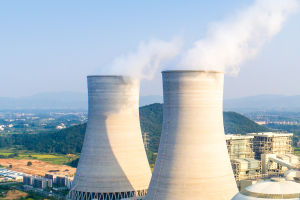
As the world shifts toward sustainable energy solutions, solar thermal power stations are emerging as a promising alternative to traditional coal-fired power plants.
These innovative systems harness the power of the sun to generate electricity, offering a cleaner, more environmentally friendly option for energy production.
In 2025, the trend of replacing coal with solar thermal power is gaining momentum, promising a significant reduction in carbon emissions and a sustainable energy future!
The Basics of Solar Thermal Power
Unlike conventional solar panels, which convert sunlight directly into electricity, solar thermal power stations focus on using sunlight to heat fluids, creating steam to drive turbines and generate electricity. These systems typically use parabolic mirrors or heliostats to concentrate solar energy onto a receiver, where the heat is transferred to a working fluid. The heated fluid then generates steam that powers turbines, similar to traditional power plants but without the use of fossil fuels.
The Transition from Coal to Solar Thermal
Many countries are investing in solar thermal technology as a way to phase out coal-fired power plants. Coal, one of the largest contributors to greenhouse gas emissions, has been the primary source of electricity for decades. However, the environmental and health impacts of coal extraction and combustion have led to a global push to transition toward cleaner energy sources.
In recent years, solar thermal power stations have been seen as a viable solution. The technology is scalable, allowing for large power stations that can provide electricity to tens of thousands of homes. Unlike traditional solar panels, which require large areas of land and may be inefficient on cloudy days, solar thermal plants can store heat and continue producing electricity even when the sun isn't shining.
Advantages of Solar Thermal Power Stations
1. Sustainability: Solar thermal power is a renewable energy source that does not deplete resources, unlike coal. The sun provides an abundant supply of energy, and its use doesn't produce harmful emissions or pollutants. This makes solar thermal power stations a key player in the fight against climate change.
2. Energy Storage Capabilities: One of the standout features of solar thermal power stations is their ability to store thermal energy for later use. Using molten salt or other heat storage materials, solar thermal plants can store excess heat generated during the day and use it to produce electricity at night or during cloudy periods. This ability to provide continuous power makes solar thermal a reliable alternative to coal.
3. Reduced Environmental Impact: Unlike coal-fired power plants, which release harmful pollutants like sulfur dioxide, nitrogen oxides, and carbon dioxide, solar thermal power stations emit zero pollutants. This contributes significantly to improved air quality and helps mitigate the effects of climate change. The transition to solar thermal technology also reduces water consumption, as many coal plants require vast amounts of water for cooling.
Real-World Examples and Future Outlook
Countries like Spain, Morocco, and the United States have already invested heavily in solar thermal power stations, with projects like Gemasolar in Spain and Noor Ouarzazate in Morocco leading the way. These plants not only provide electricity but also create jobs and stimulate the local economy. For example, Gemasolar has a storage system that allows it to provide electricity even during nighttime hours, marking a significant advancement in the technology’s reliability.
The transition to solar thermal power stations is not just about replacing coal; it is part of a broader global energy shift towards renewables. As technological advancements continue to improve efficiency and reduce costs, more regions are expected to follow suit. It is estimated that by 2030, solar thermal could account for a significant portion of the world's energy production, with the potential to replace a large number of coal-fired plants.
Challenges and Considerations
Despite the many advantages, the transition to solar thermal power faces certain challenges. Initial infrastructure costs for building solar thermal plants are high compared to traditional coal plants, though this cost is expected to decrease as the technology becomes more widespread and efficient. Additionally, while solar thermal plants can store energy, they still rely on sunlight, meaning they are location-dependent and require vast amounts of land, which may not always be available.
Another consideration is the need for supportive government policies and investments to accelerate the shift from coal to renewable energy. In some regions, coal industries are deeply entrenched, and transitioning away from them can face political and economic resistance. However, the long-term benefits of reduced emissions and cleaner energy sources far outweigh the initial hurdles.
Solar thermal power stations are poised to play a pivotal role in replacing coal-fired plants, contributing to a greener and more sustainable energy future. With advancements in technology, the ability to store solar energy, and the growing global commitment to reducing carbon emissions, solar thermal plants offer a compelling alternative to traditional coal power.
As more countries invest in this renewable energy source, we can expect to see significant progress in the global transition to clean energy, helping to mitigate climate change and ensure a healthier planet for future generations!


